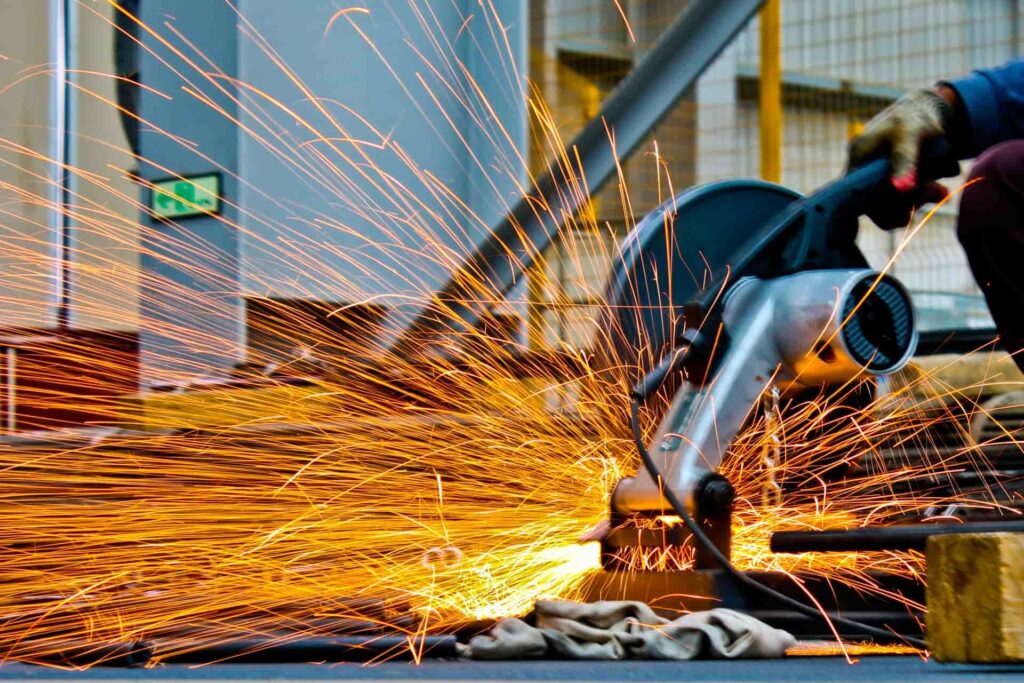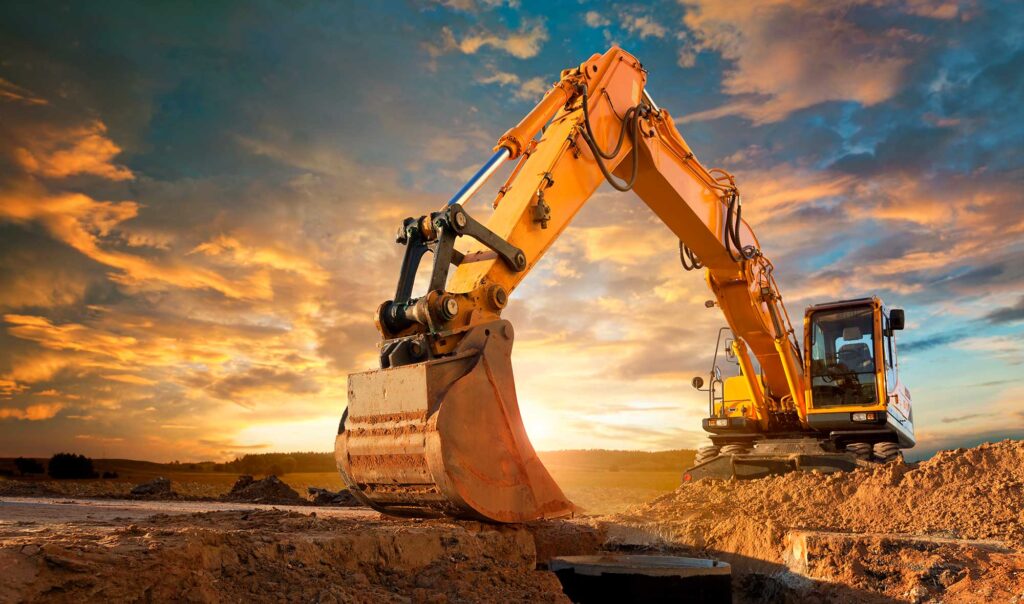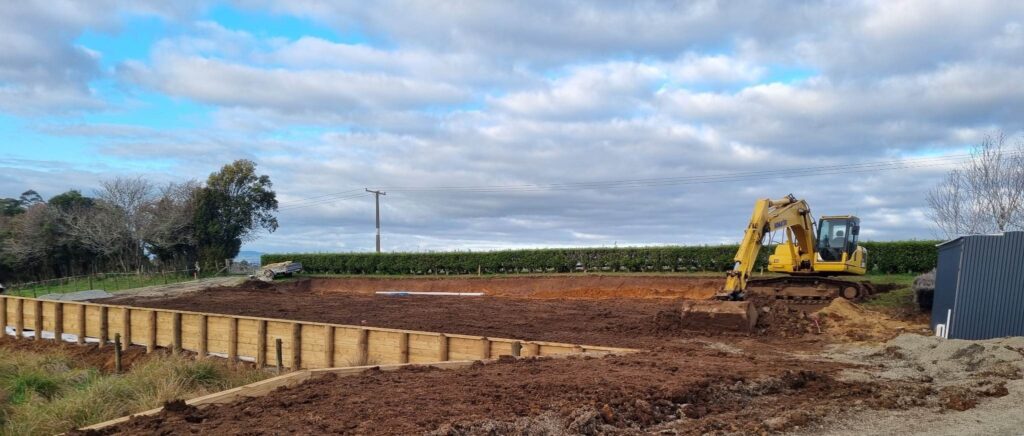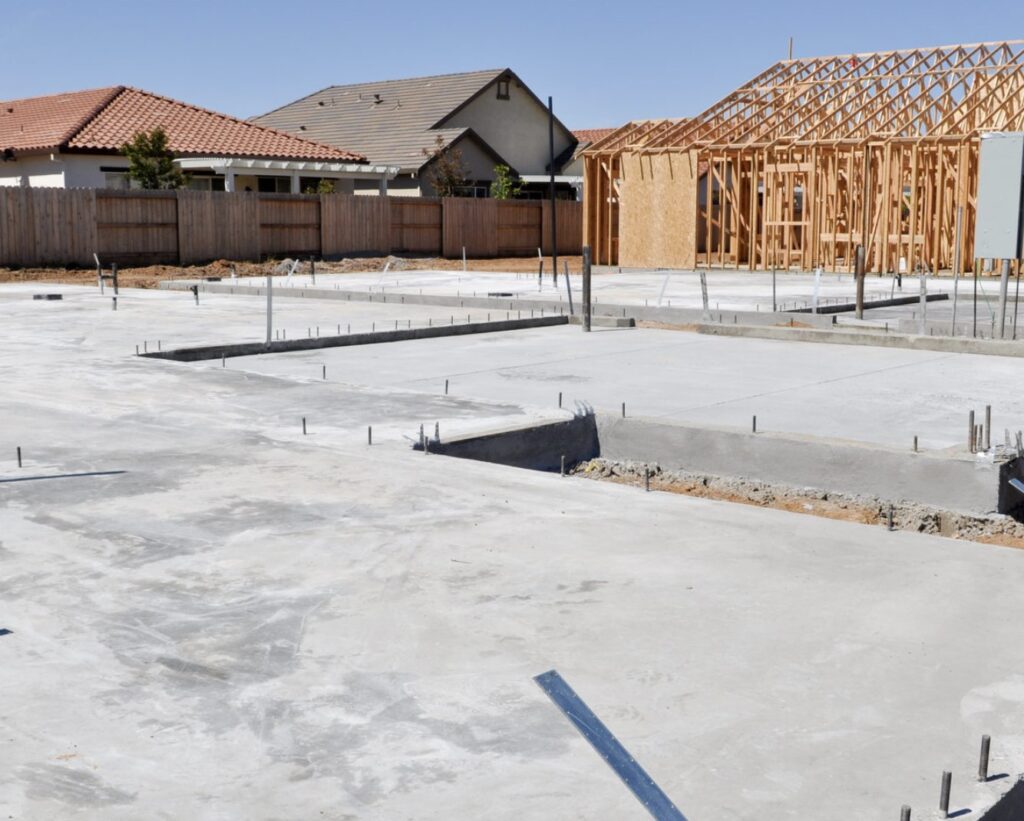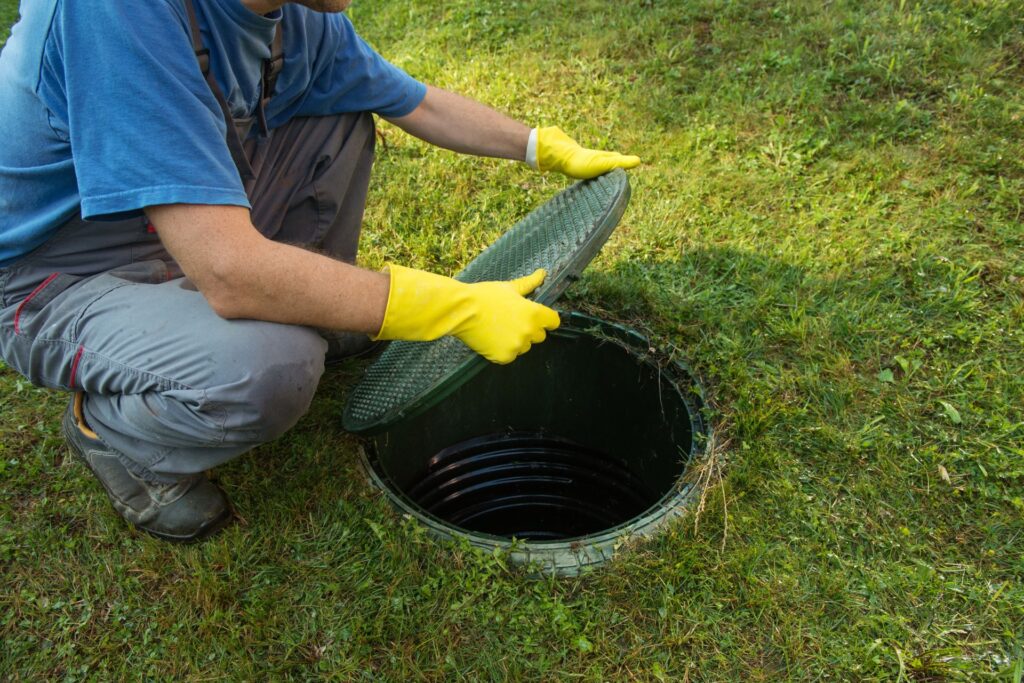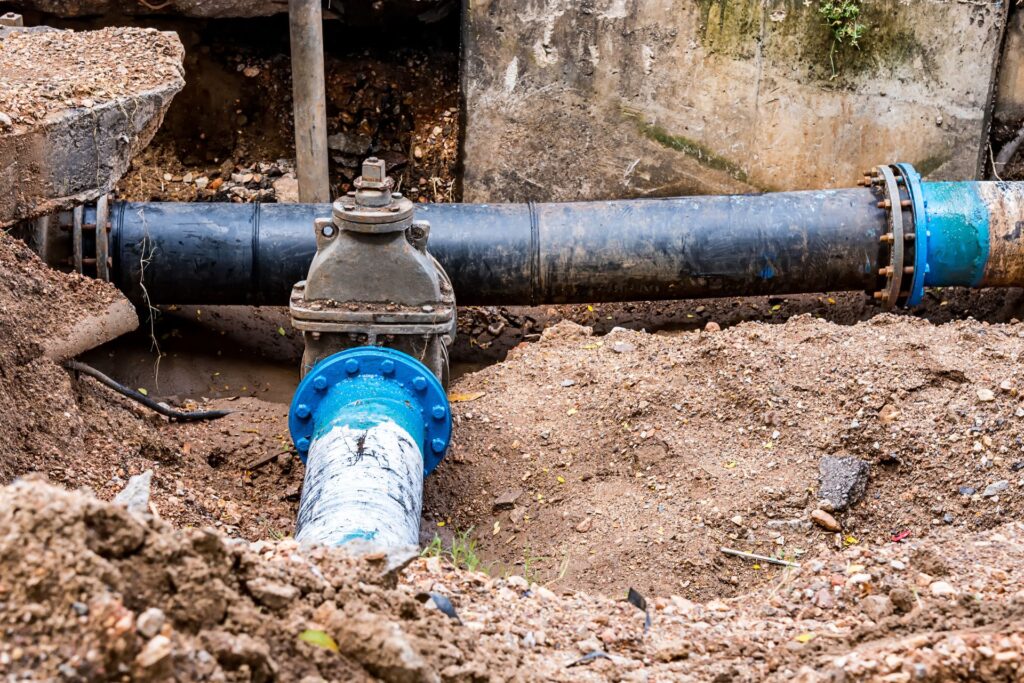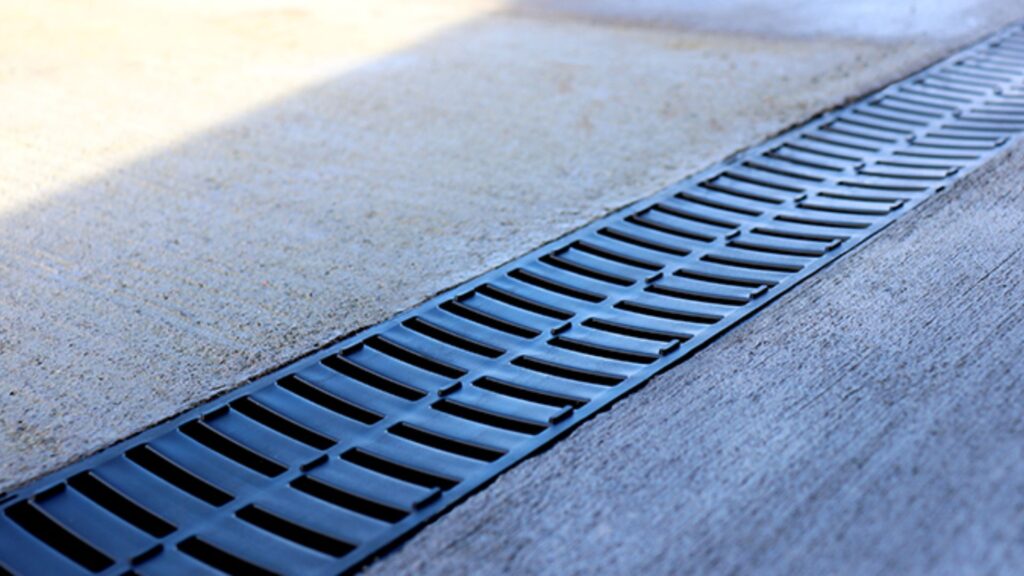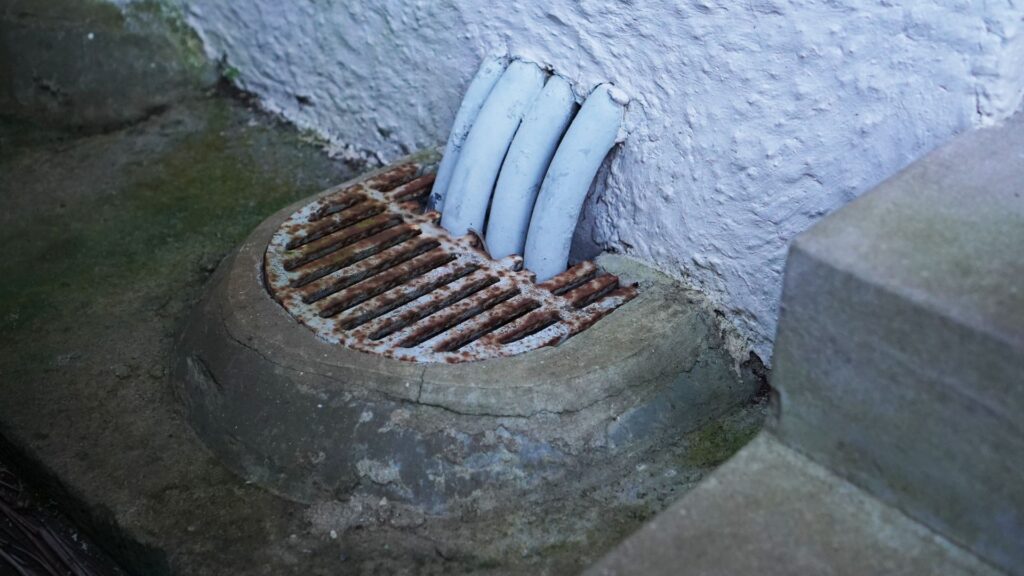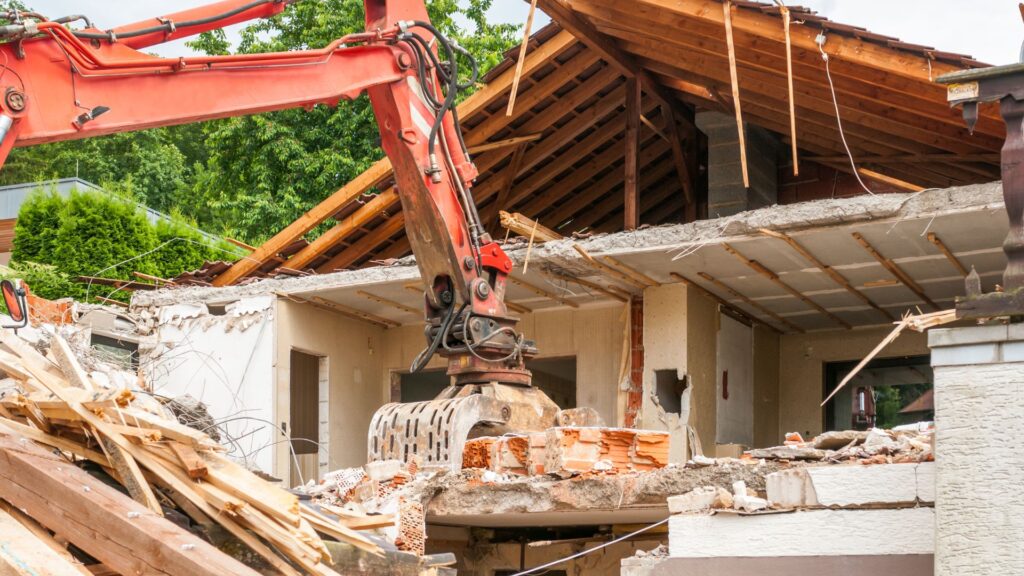Welcome to your ultimate guide on subsoil drainage systems in New Zealand, where we dive into everything you need to know about protecting your home or property from the damaging effects of water buildup. Whether you’re dealing with soggy lawns, damp basements, or persistent waterlogged soil, subsoil drainage systems offer an effective solution to keep your space dry and your foundation intact. In this article, we’ll explore the different types of subsoil drainage systems available in NZ, why they’re so important, and how they can help you safeguard your home, all while enhancing your property’s value and longevity.
A subsoil drainage system in NZ helps manage excess groundwater by diverting it away from foundations, gardens, and other areas prone to waterlogging. These systems, such as French drains and sump pumps, prevent soil saturation, protect your property from structural damage, and improve landscaping health. Essential for properties in regions with heavy rainfall, subsoil drainage systems are crucial for maintaining dry, stable foundations and ensuring long-term property value.
Table of Contents
What Is A Subsoil Drainage System?
A subsoil drainage system is a critical infrastructure designed to manage water levels in the soil beneath the surface. This system is particularly important for properties where excessive water can lead to problems such as flooding, waterlogging, or damage to the foundation. Let’s break it down in a way that’s easy to understand, starting with the basics of what it is and how it works.
Definition
In simple terms, a subsoil drainage system is a network of pipes or channels installed below the ground level to redirect water away from the soil. Think of it as an underground pathway for excess water, which helps keep the soil dry and prevents water from pooling around building foundations or landscaping. By managing water levels below the surface, these systems reduce the risk of damage caused by water pressure or erosion.
How It Works
The key purpose of subsoil drainage systems is to divert water away from areas where it can cause harm, such as your home’s foundation or garden. These systems typically consist of perforated pipes that are installed underground. Water seeps into these pipes through small holes, which then carry the water away to a drainage outlet, sump pump, or another suitable exit point. The system relies on gravity to guide the water flow, making sure that water doesn’t accumulate around structures where it could cause issues like foundation cracking, soil erosion, or the formation of swampy patches.
To further enhance their effectiveness, subsoil drainage systems often incorporate materials like gravel and geotextile fabric to filter out debris, ensuring the pipes don’t clog and that the water flows freely.
Types of Subsoil Drainage Systems
Subsoil drainage systems can vary depending on the specific needs of a property. Here are some common types:
- French Drains: A popular type of subsoil drainage, French drains are trenches filled with gravel and a perforated pipe that redirects water away from problem areas. They’re often used to manage groundwater or surface water that accumulates around buildings or in low-lying areas.
- Drainage Channels: These systems consist of narrow channels lined with a water-resistant material that directs water toward an outlet. They’re typically used in landscapes where water needs to be efficiently redirected to prevent pooling.
- Sump Pumps: This is an active subsoil drainage solution where water is collected in a sump basin and then pumped away to a drainage area. Sump pumps are often used in basements or areas with particularly high water tables.
- Geotextile Systems: Geotextile fabric is used in conjunction with drainage pipes to help filter out soil and debris. These systems are useful in preventing blockages in subsoil drainage pipes, especially in areas with fine, silty soils.
Why It’s Important in NZ
Subsoil drainage systems are especially important in New Zealand due to the country’s unique climate and soil conditions. Areas that experience heavy rainfall, such as the North Island, are particularly prone to waterlogged soils and flooding. Additionally, many regions in NZ have clay-based soils that retain water, making efficient drainage crucial for maintaining the stability of buildings and landscapes.
Without proper subsoil drainage, homes and gardens in water-prone areas could face serious issues, including foundation damage, soil erosion, or even the loss of valuable landscaping. These systems provide peace of mind by actively managing water levels and keeping structures dry and secure.
By installing a subsoil drainage system, homeowners in New Zealand can protect their properties from the damaging effects of excess moisture, making it an essential consideration for anyone living in regions with unpredictable weather or challenging soil conditions.
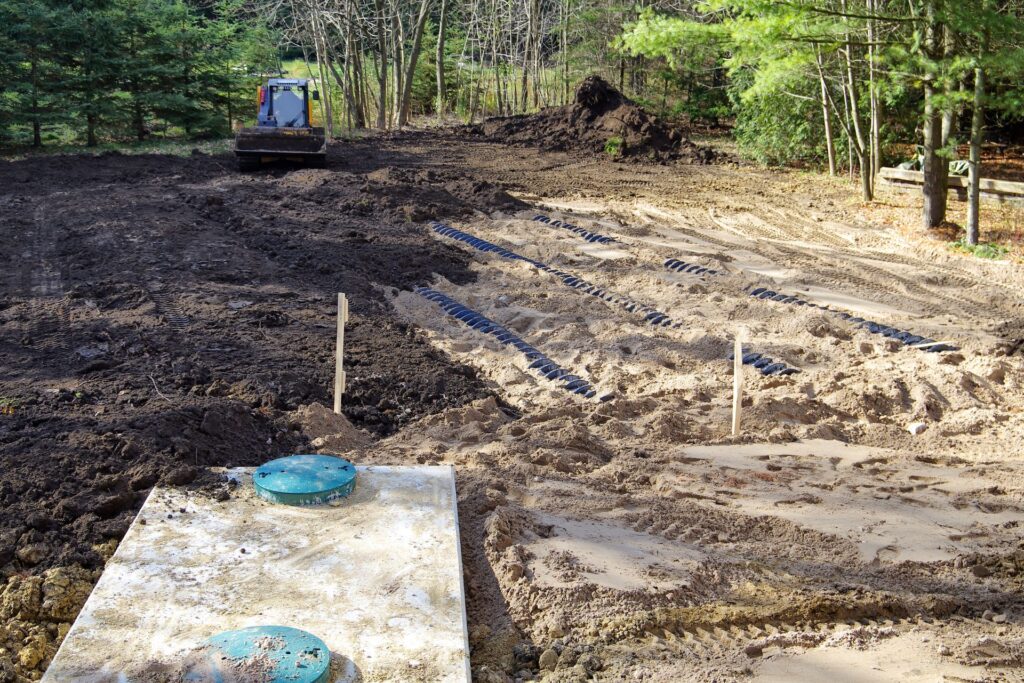
Common Signs You Need A Subsoil Drainage System
When it comes to protecting your home and garden from water damage, knowing the common signs of drainage issues is crucial. Subsoil drainage systems are designed to divert excess water away from your property, helping to maintain structural integrity and the health of your landscaping. Here are a few red flags that might indicate you need a subsoil drainage system:
Waterlogged Soil
One of the clearest signs of a drainage issue is persistently wet or waterlogged soil. If your yard remains damp long after it has rained, or if you notice puddles that don’t seem to disappear, this could point to inadequate drainage beneath the surface. When soil becomes oversaturated, it loses its ability to support plant life effectively. Not only does this hinder your lawn and garden’s growth, but it also opens the door for soil erosion, leading to more severe problems over time.
To identify waterlogged soil, check for muddy patches or areas where the ground feels squishy underfoot. During dry spells, these areas might still appear wet or soggy. If you’re constantly battling pools of standing water, a subsoil drainage system could be the solution to restoring balance and preventing further damage to your landscape.
Foundation Damage
Poor drainage can lead to serious structural problems in your home. Excess water can seep into the foundation, causing it to weaken and crack over time. When water accumulates around your home’s foundation, the pressure it exerts can lead to cracks in walls, floors, and even the foundation itself. These cracks allow moisture to enter your home, creating dampness and contributing to potential mold growth.
Foundation damage may be subtle at first—small cracks or a slight shift in the home’s structure—but over time, these issues can worsen, leading to costly repairs. If you notice any unusual cracking, particularly around your foundation or in your basement, it’s essential to address the issue quickly. Installing a subsoil drainage system can help alleviate the pressure caused by excess water and protect your home’s foundation from further damage.
Soggy Lawns & Gardens
Another telltale sign that you might need a subsoil drainage system is the state of your lawn and garden. If your plants are struggling to thrive despite proper care, or if parts of your garden consistently appear waterlogged, it could be a sign that water isn’t draining properly beneath the surface. Prolonged exposure to standing water can suffocate plant roots, leading to plant death and a generally unhealthy-looking garden.
Soggy lawns can also become a breeding ground for pests, fungi, and diseases that thrive in moist conditions, further damaging your landscaping efforts. By installing a subsoil drainage system, you can help keep your garden healthy by ensuring excess water is properly diverted away, allowing your plants and lawn to flourish.
Basement or Crawl Space Dampness
If your basement or crawl space feels damp, smells musty, or you notice water stains on the walls or floors, poor drainage could be to blame. Water that collects around the foundation of your home can eventually make its way inside, leading to dampness in these lower areas. This not only poses a risk to the structure of your home but also creates a perfect environment for mold and mildew to thrive.
Common indicators of poor drainage in basements or crawl spaces include persistent dampness, condensation on windows or walls, and a noticeable increase in humidity levels. A subsoil drainage system can help by directing water away from your home, reducing moisture buildup and protecting your basement or crawl space from further issues.
In summary, recognizing these signs early on can help you address drainage problems before they become more severe. Installing a subsoil drainage system is an effective way to manage excess water and protect your property, ensuring that your home, garden, and foundation remain safe and sound for years to come.

Types Of Subsoil Drainage Systems In New Zealand
When it comes to managing excess water below the surface, subsoil drainage systems are essential. In New Zealand, where the landscape can vary dramatically from lush, fertile plains to rocky, uneven terrains, selecting the right drainage system is key to maintaining a property’s stability and preventing issues like waterlogging or erosion. Below, we’ll explore some of the most commonly used subsoil drainage systems in New Zealand, delving into their functions, advantages, and where they perform best within the country’s unique environments.
French Drain Systems
How French Drains Are Installed and How They Work
French drains are one of the most popular subsoil drainage systems, especially for residential properties in New Zealand. They consist of a trench filled with gravel or rock that contains a perforated pipe. The pipe helps to redirect water away from problem areas, such as foundations or low-lying regions of the property, by allowing groundwater to flow through it and disperse safely. The trench is usually covered with a layer of soil to blend into the landscape.
Pros and Cons in NZ’s Climate and Soil Types
French drains are highly effective in areas with heavy rainfall or poor natural drainage, making them an excellent choice in many parts of New Zealand. They can handle the country’s sometimes unpredictable weather patterns by effectively diverting water away from structures. However, in areas with highly clay-based soils, the effectiveness of French drains can be somewhat reduced, as clay tends to block the flow of water more easily. On the other hand, in sandy or loamy soils, French drains are a cost-effective and low-maintenance option. While French drains are a versatile solution, they do require careful maintenance to prevent clogging over time, particularly in regions with clay soils or debris-heavy water runoff.
Drainage Channels
How These Systems Function and Where They Are Commonly Used
Drainage channels, also known as linear drains, are designed to capture and direct surface water away from larger areas. These systems consist of long, narrow trenches covered by grates, which collect runoff water and channel it into underground drainage pipes. This system is particularly well-suited for properties with extensive paved areas, such as commercial properties or large residential developments. In New Zealand, drainage channels are commonly used in car parks, driveways, and along the edges of larger paved outdoor spaces where water tends to accumulate.
Benefits for Larger Residential Properties or Commercial Areas
For properties that span considerable square footage or for commercial spaces that need to manage a high volume of water, drainage channels provide an effective and visually unobtrusive solution. They prevent water pooling and flooding by ensuring efficient water flow away from hard surfaces. Given New Zealand’s varied weather conditions, from heavy downpours to dry spells, drainage channels are beneficial in preventing water damage and maintaining the integrity of paved surfaces. Their sleek, flush-to-the-ground design also minimizes tripping hazards, making them a safe and practical solution for public spaces.
Sump Pump Systems
Overview of Sump Pumps, Their Role in Subsoil Drainage, and Where They’re Most Effective
A sump pump system is a critical component in properties that experience frequent flooding or where groundwater tends to collect in low-lying areas. These systems consist of a sump pit, which collects water, and a pump that pushes the water out and away from the property to prevent water damage. In New Zealand, sump pumps are most commonly found in areas prone to frequent flooding or properties built on land with poor natural drainage.
Sump pumps are especially effective in properties that have basements or other below-ground spaces, where water can accumulate and cause long-term structural damage. Given New Zealand’s sometimes intense rainfall, sump pumps offer peace of mind by quickly and efficiently removing excess water, preventing flooding and water-related damage. However, it’s important to note that sump pumps require electricity to function, so they may not be the best standalone solution in areas that experience frequent power outages without backup systems in place.
Geotextile Systems
How These Fabric-Based Systems Improve Drainage and Soil Stability
Geotextile drainage systems use permeable fabrics to enhance soil stability and improve drainage. These fabrics, typically made of polypropylene or polyester, allow water to flow through while filtering out soil particles, which helps prevent blockages in the drainage system. In New Zealand, geotextile systems are often employed in conjunction with other drainage solutions like French drains or retaining walls, as they help to stabilize the soil and prevent erosion in areas prone to shifting or water saturation.
Where These Systems Are Used in New Zealand
Geotextile systems are particularly beneficial in areas with soft or unstable soil, such as coastal regions or properties near rivers and lakes. In these environments, the combination of water and loose soil can lead to significant erosion or landslides. By adding a geotextile layer to the subsoil drainage system, property owners can mitigate these risks while promoting better water flow and maintaining the structural integrity of their land. Additionally, geotextile systems are often used in large landscaping projects or civil construction works across New Zealand, as they provide a long-lasting and effective means of controlling water and soil movement.
By understanding the various types of subsoil drainage systems available in New Zealand, property owners can make informed decisions on the best solutions to protect their investments. Each system offers unique advantages depending on the soil composition, climate, and specific water management needs of the property, ensuring that no matter where you are in the country, there’s a suitable drainage solution to meet your requirements.
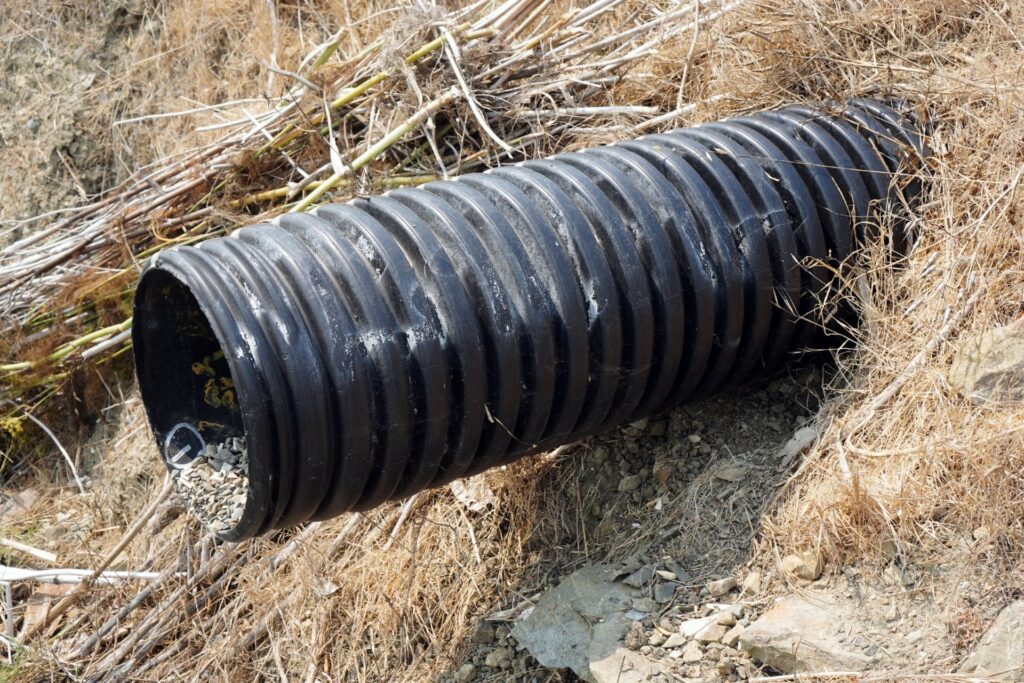
Benefits Of Subsoil Drainage Systems
Subsoil drainage systems play a crucial role in safeguarding your property and improving its overall quality. Let’s explore some of the key benefits that come with having a well-designed drainage system beneath the surface.
Prevent Foundation Damage
One of the most significant advantages of subsoil drainage systems is their ability to protect the foundation of your home. Excess water accumulation around the foundation can lead to serious structural issues over time. The soil surrounding your foundation may become oversaturated, causing it to expand and exert pressure on the foundation walls. This can result in cracks, shifting, and in extreme cases, even structural failure. By effectively channeling water away from the foundation, a subsoil drainage system prevents these costly damages, saving homeowners from extensive repair bills and preserving the integrity of their homes.
Protect Landscaping
A well-functioning subsoil drainage system is essential for maintaining the health and beauty of your landscaping. Waterlogged soil can suffocate plant roots, leading to unhealthy plants, wilting, and even death. Whether you have a garden, lawn, or decorative landscaping, excess water can cause significant harm. With subsoil drainage in place, water is efficiently removed from the surface, ensuring that plants and grass receive just the right amount of moisture to thrive. This protection against overwatering is particularly important in areas prone to heavy rainfall or poor natural drainage, making it a wise investment for garden lovers and landscape enthusiasts alike.
Improve Property Value
Effective drainage systems are more than just practical solutions; they can also enhance the overall value of your property. Potential buyers are likely to see a subsoil drainage system as a sign that the property has been well-maintained and cared for. Homes with reliable drainage systems have lower risks of foundation damage, landscaping problems, and moisture-related issues, all of which can be deal-breakers for buyers. By reducing the likelihood of these common problems, a subsoil drainage system can help you command a higher price when it’s time to sell, giving you a solid return on investment.
Reduce Moisture and Mold in Homes
Another critical benefit of subsoil drainage systems is their ability to control moisture levels within your home. Excess water around the foundation often finds its way into basements, crawl spaces, or lower levels of the home, leading to damp conditions that encourage mold and mildew growth. Mold is not only unsightly but also poses significant health risks, particularly for individuals with allergies, asthma, or other respiratory conditions. A properly installed subsoil drainage system helps keep these areas dry, reducing the likelihood of mold and mildew problems, and ensuring a healthier indoor environment. In the long run, this can save homeowners from having to invest in mold remediation services and improve the overall comfort of the home.
Investing in a subsoil drainage system offers a host of benefits, from protecting your home’s foundation and preserving your landscaping to enhancing property value and promoting a healthier living environment. Whether you’re looking to prevent costly repairs or simply improve the quality of your home and garden, subsoil drainage is a smart, long-term solution that delivers peace of mind and tangible results
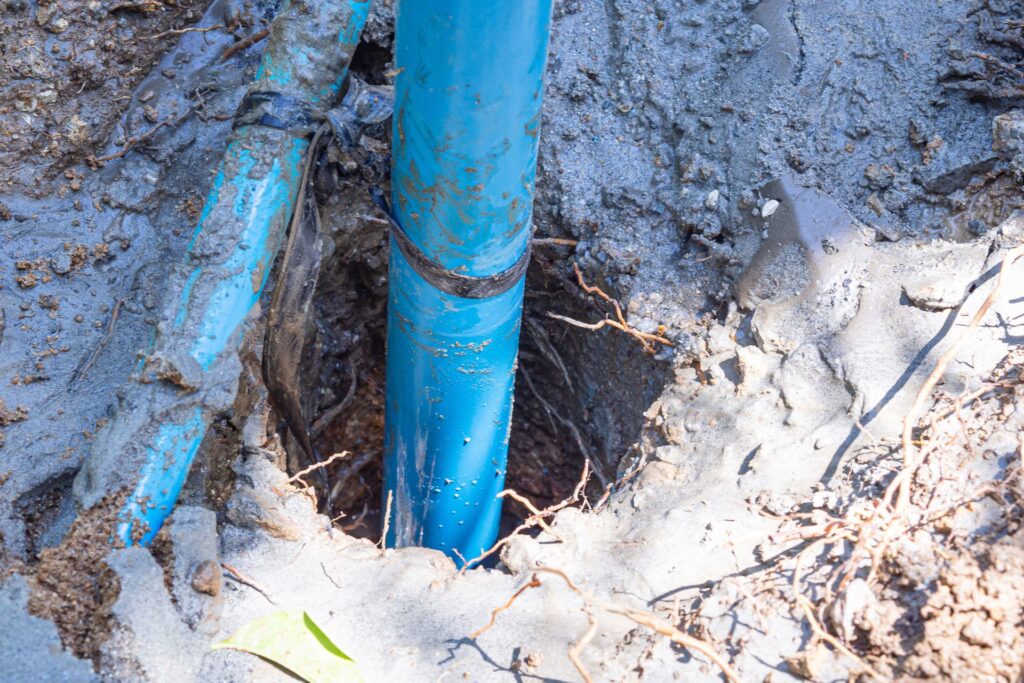
Installation Process Of Subsoil Drainage Systems In NZ
Assessing Your Site
Before you begin installing a subsoil drainage system, the first and most crucial step is to assess your site thoroughly. Key factors that need to be evaluated include the soil type, slope of the land, and existing drainage issues. Soil composition plays a significant role in determining how water will move through your property. For example, clay soils tend to hold water, while sandy soils allow for quicker drainage. Understanding the slope is equally important since water naturally flows downhill, so a steep slope might require a more strategic approach. Additionally, if your property has areas prone to water pooling or flooding, identifying these drainage problem zones upfront can help tailor the system to your unique needs.
Step-by-Step Installation Guide
Once you’ve assessed the site, the actual installation of the subsoil drainage system can begin. Here’s a step-by-step breakdown of how the process typically unfolds:
1. Site Excavation and Preparation: The first physical step in the installation process is excavating the areas where the drainage pipes or channels will be laid. Depending on the size and complexity of the system, this could involve anything from digging shallow trenches to large-scale excavation with machinery. The goal is to create a trench that slopes gently to ensure water will flow toward a designated discharge point.
2. Laying of Drainage Pipes or Channels: After excavation, the next step is placing the drainage pipes or channels into the trenches. These pipes are typically perforated to allow water to seep in and then drain away. The pipes should be installed at the correct slope (usually 1% to 2%) to encourage water flow. The positioning of the pipes is critical for efficiency, ensuring that the system collects water from the areas where it’s most needed.
3. Installation of Geotextiles or Additional Materials: Installing geotextile fabric around the drainage pipes is an optional yet highly recommended step. Geotextiles help prevent soil and sediment from clogging the pipes, ensuring that water can continue to flow freely over time. In some cases, additional materials like gravel may be laid around the pipes to further improve filtration and water movement. The choice of materials will depend on the specific conditions of your site.
4. Backfilling and Final Testing: Once the pipes are in place, the trenches are backfilled with soil, gravel, or a combination of both, depending on the design of the system. After backfilling, it’s essential to perform a final test to ensure the system is working correctly. Water is usually introduced to the system to check that it’s draining away as expected, with no blockages or unexpected issues.
DIY vs Professional Installation
When it comes to the actual installation of a subsoil drainage system, you’ll need to weigh the pros and cons of doing it yourself (DIY) vs hiring a professional in NZ.
- DIY Installation: Installing a subsoil drainage system yourself can be more cost-effective, especially for smaller projects or those with some DIY experience. You’ll save on labor costs, and there’s a sense of satisfaction in handling the work yourself. However, DIY installations also carry risks, especially if you’re unfamiliar with the specific requirements of drainage systems. Poor installation can lead to ineffective drainage, potentially worsening the water issues you’re trying to solve. It’s crucial to have a clear understanding of the process, access to the right tools, and a plan to ensure everything is done correctly.
- Professional Installation: On the other hand, hiring a professional offers the benefit of expertise and experience. Professionals will be able to assess your site with a trained eye, ensuring that the installation is tailored to your property’s needs. They’ll also have the proper equipment and knowledge to avoid common pitfalls, reducing the likelihood of issues down the road. While the upfront cost may be higher, a professional installation can save you time and provide peace of mind, knowing the job has been done right. Additionally, professionals are familiar with NZ’s specific regulations and environmental conditions, which can be crucial for ensuring long-term effectiveness.
In conclusion, while a DIY approach might be tempting for cost-saving reasons, the complexity and potential for error in subsoil drainage installation often make professional help a wise investment. Carefully considering your needs and the specifics of your site will help you decide the best path forward.

Subsoil Drainage Systems Cost Breakdown In New Zealand
When it comes to subsoil drainage systems in New Zealand, the costs can vary significantly depending on several critical factors. This section breaks down the key cost influencers and provides an idea of the average expenses involved in different types of subsoil drainage installations across the country.
Factors Affecting Costs
The total cost of installing a subsoil drainage system can be influenced by several variables. These factors not only impact the overall price but also affect the complexity and time required for installation. Let’s take a closer look at the primary cost drivers:
1. Type of System Chosen
The type of subsoil drainage system you select will be one of the biggest factors affecting cost. For instance, a basic French drain system, which channels water away from areas where it tends to pool, tends to be less expensive compared to more complex systems like sump pumps, which actively pump water away from the property. The level of engineering required and the complexity of the chosen system will greatly influence the price.
2. Size of the Property
The larger the property, the more extensive the drainage system needs to be, naturally increasing both material and labour costs. Larger properties may require more piping, excavation, and possibly even multiple drainage systems to ensure adequate water management. This means that larger homes or properties with sprawling gardens or lawns will typically see higher costs than smaller urban sections.
3. Soil Conditions and Site Complexity
New Zealand’s diverse soil types, from sandy coastal soils to heavy clay, can play a significant role in drainage system costs. Poorly draining soils, such as clay, can make excavation more difficult and time-consuming, while rocky soils may require additional machinery and labor to work through. Sloped or uneven terrain adds further complexity, often requiring more sophisticated systems and additional labor.
4. Labor and Material Costs
Labor costs in New Zealand vary depending on the region and the complexity of the project. In rural areas, labor costs might be slightly lower, while in urban centres such as Auckland, Wellington, or Christchurch, you can expect to pay more for skilled labor. Material costs can also fluctuate based on the quality and type of materials chosen. For example, premium piping and filtration materials will increase the total cost compared to basic options.
Average Cost Estimates
While every drainage project is unique, it helps to have some general figures in mind when planning your budget. Here are some ballpark cost estimates for subsoil drainage systems in New Zealand:
- French Drains: French drains are one of the more common and cost-effective solutions for subsoil drainage. On average, you can expect to pay between $1,500 and $5,000 for a French drain installation, depending on the size of the property and the complexity of the site.
- Sump Pumps: Sump pumps, which require more extensive excavation and the installation of an active pump system, tend to be more expensive. Costs for installing a sump pump can range between $5,000 and $15,000, with the final figure heavily influenced by the site’s complexity and the type of pump required.
Urban vs. Rural Installation Costs
There is often a notable difference in the cost of subsoil drainage installations between urban and rural areas. Urban installations typically involve higher costs due to more stringent council regulations, higher labor rates, and the need to work around existing infrastructure like driveways and footpaths. In rural areas, however, the cost might be lower due to fewer regulations and more open spaces to work with, though factors like accessibility to the property and local contractor availability could still drive up costs.
For example, installing a basic French drain in a rural area might cost around $1,500 to $3,500, while the same installation in a more densely populated urban area could push the price up to $4,000 to $6,000. For sump pumps, the cost difference is even more pronounced, with rural installations ranging from $5,000 to $10,000, while urban installations could go as high as $15,000 or more.
Ultimately, the cost of a subsoil drainage system in New Zealand will depend on the specific requirements of your property and the type of system you choose to implement. It’s essential to get multiple quotes and work with experienced contractors to ensure the job is done right the first time, avoiding costly fixes in the future.

Maintaining Subsoil Drainage Systems
Subsoil drainage systems play a crucial role in protecting your property from water damage, so it’s essential to keep them in good working order. Proper maintenance ensures these systems operate efficiently and prevents costly repairs down the line. Let’s break down the steps for maintaining subsoil drainage systems effectively.
Routine Maintenance Tips
Routine maintenance of your subsoil drainage system is key to preventing long-term damage. Start by inspecting the system periodically for signs of blockages, damage, or wear. Common issues include debris build-up, tree roots infiltrating the pipes, or sediment accumulation that can lead to poor drainage. To avoid these problems, schedule regular inspections, especially after heavy rains or storms, as these are prime times for issues to arise.
Look for signs such as slow drainage or pooling water near your property, which may indicate that the system is not functioning correctly. If you notice these issues, take action promptly to clear out any blockages or have damaged sections repaired by a professional. Staying on top of these small tasks can extend the lifespan of your drainage system and save you money in the long run.
Seasonal Maintenance in NZ
New Zealand’s seasonal variations, particularly its heavy rain seasons, present unique challenges for subsoil drainage systems. Spring and autumn are often the wettest times of the year, so it’s important to prepare your system in advance of these periods.
Before the heavy rains hit, clear any leaves, branches, and other debris from around the drainage outlets. Additionally, check for cracks or signs of wear in the pipes that could worsen with increased water flow. During the wetter months, keep a close eye on your system to ensure it’s handling the water load properly. If you experience unusually wet conditions, perform an additional check to ensure no unexpected blockages have formed.
Post-rain inspections are equally important—heavy water flow can sometimes shift soil and expose parts of the drainage system that should remain covered. Address any issues immediately to prevent further damage.
Signs Your System Needs Repairs
Knowing the warning signs that your subsoil drainage system requires repairs can help you avoid bigger problems. The first sign to watch for is water pooling or drainage that is noticeably slower than usual. This could indicate a blockage somewhere in the system, often caused by debris or sediment build-up.
Another sign is wet spots or dampness appearing on your lawn or garden in places that are usually dry. This could mean there is a break or a leak in the pipes underground. Cracks or sagging in the pavement, foundation, or even walls could also be an indicator that the subsoil drainage system isn’t functioning as it should, causing water to accumulate and exert pressure on your property’s structure.
If you observe any of these symptoms, it’s critical to call in a drainage specialist to assess the system and carry out repairs as necessary. Prompt attention will help prevent further deterioration and safeguard your property from water damage.
Maintaining your subsoil drainage system is a vital part of protecting your home from water damage, particularly in a country like New Zealand, where weather patterns can vary significantly throughout the year. By performing routine checks, preparing for the wet seasons, and recognizing the early warning signs of trouble, you can keep your system in good working order and avoid costly repairs down the road.
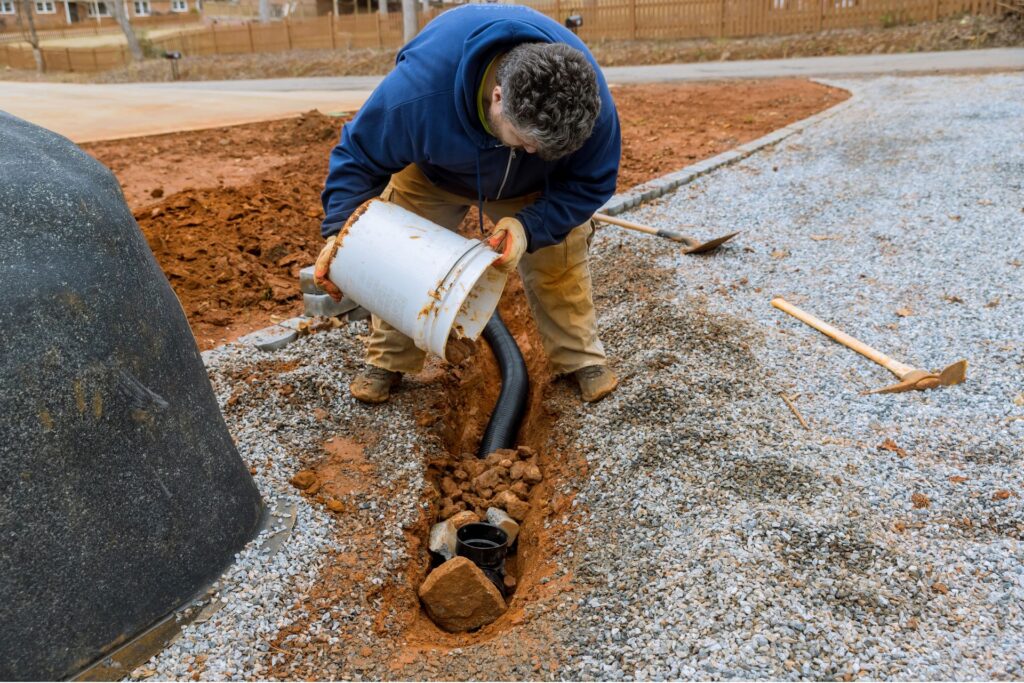
Choosing The Right Subsoil Drainage System For Your Property
When it comes to selecting the best subsoil drainage system for your property, it’s essential to take a strategic approach that takes your specific needs into account. This process is more than just picking a one-size-fits-all solution; it involves understanding your property’s unique characteristics, making informed decisions, and possibly consulting with experts to ensure long-term efficiency.
Assessing Your Needs
The first step in choosing the right subsoil drainage system is to evaluate the needs of your property. This involves considering a variety of factors, such as the size of your property, the layout of your landscaping, and your overall budget. A larger property, for example, may require a more extensive network of drainage pipes, while a smaller, urban garden might need a more compact solution.
Additionally, landscaping features like slopes, gardens, or lawns can significantly impact the type of drainage system you need. For example, if your property has low-lying areas prone to pooling water, a more robust system with strategically placed drainage channels may be required to prevent waterlogging. Conversely, a well-graded yard may only need minimal drainage support. Balancing these considerations with your budget will help ensure you choose a system that is not only effective but also cost-efficient.
Consulting Experts
Though some homeowners may feel confident in their ability to assess and install a subsoil drainage system themselves, there are times when consulting a professional is the wisest choice. For instance, if you’re dealing with complex soil conditions, such as clay or heavy compacted soil, or if you’re unsure about the grading of your property, a professional evaluation can save you time and money in the long run.
An expert can offer insights into the best materials, installation methods, and long-term maintenance strategies. They can also help identify any underlying issues that may not be immediately obvious, such as underground water sources or drainage patterns. Hiring a professional might seem like an added expense, but it often leads to a more reliable and efficient drainage solution that lasts longer and requires less maintenance.
Custom Solutions
No two properties are alike, and as such, subsoil drainage systems should often be tailored to the specific needs of a property. Custom solutions are particularly important when dealing with unique landscapes or when living in areas with distinct drainage challenges. For example, an urban home with limited outdoor space may benefit from a more discreet drainage system like French drains or soakaways, designed to blend in with the existing environment while efficiently managing water runoff.
On the other hand, rural properties, which may have more expansive grounds, might require a larger system that includes multiple drainage lines or retention ponds to effectively manage rainwater. In both cases, custom solutions ensure that your drainage system works harmoniously with the environment, minimizing the risk of water damage and soil erosion while promoting healthier plant growth.
Ultimately, the key to selecting the right subsoil drainage system lies in understanding your property, seeking expert advice when necessary, and considering custom solutions that meet your unique needs. By following these steps, you can protect your property from water damage and enhance its overall health and sustainability.

Environmental Considerations And Regulations In New Zealand
When dealing with subsoil drainage systems, it’s essential to consider not only their functionality but also their impact on the environment. This section focuses on both the sustainability of subsoil drainage systems and the need to comply with New Zealand’s specific regulations and council requirements. As sustainable practices gain momentum, eco-friendly solutions and compliance with regulations ensure that subsoil drainage installations minimize environmental damage while meeting legal standards.
Sustainability of Subsoil Drainage Systems
One of the primary concerns with subsoil drainage systems is their potential impact on the surrounding environment. Traditional drainage systems, particularly those made from non-biodegradable materials, can have long-lasting negative effects on ecosystems. To mitigate this, many modern systems now incorporate sustainable practices and materials. For instance, some systems use recycled plastic pipes or opt for natural filtration systems like gravel and sand layers that reduce the need for synthetic components.
Eco-friendly subsoil drainage systems can also help manage stormwater more effectively, reducing the risk of soil erosion and water contamination. These systems are designed to work in harmony with the natural landscape, preserving the quality of groundwater while protecting plant and animal habitats. By investing in sustainable drainage solutions, property owners contribute to a healthier environment, ensuring that their installations do not exacerbate issues like water pollution or excessive land disturbance.
Moreover, sustainable subsoil drainage systems tend to have lower long-term maintenance costs. By using durable, environmentally-friendly materials, these systems are built to last, reducing the need for frequent repairs or replacements. The long-term benefits, both financial and environmental, make sustainability a key consideration when planning subsoil drainage installations.
Compliance with NZ Regulations
In New Zealand, installing subsoil drainage systems requires adherence to specific regulations and guidelines, often dictated by local councils. These regulations are in place to ensure that drainage systems are not only effective but also environmentally responsible. Failing to comply with these rules can result in hefty fines, legal complications, and the need to rework the system to meet standards.
One of the key areas of compliance is the need to obtain the appropriate consents before beginning any drainage work. Depending on the scope of the project and its potential impact on the environment, you may need resource consents or building permits from the local council. These consents ensure that the drainage system design will effectively manage water while minimizing any negative effects on the local ecosystem.
Another important aspect of compliance is ensuring that subsoil drainage systems are installed to prevent water contamination. For example, drainage systems that connect to public waterways must have filtration mechanisms in place to prevent sediment and pollutants from entering natural bodies of water. Furthermore, certain councils may have guidelines related to water conservation, which could impact how the drainage system is designed and operated.
Regulations also cover the proximity of drainage systems to other infrastructure, such as roads and foundations, to avoid potential damage. Some councils require that drainage systems be installed by certified professionals to ensure that the work meets all safety and environmental standards.
In summary, complying with New Zealand’s regulations for subsoil drainage installations is essential for protecting the environment and avoiding legal complications. By focusing on sustainability and following the necessary guidelines, you can ensure that your subsoil drainage system is both effective and environmentally responsible.

Case Studies or Testimonials (Optional Section)
Incorporating real-life examples, case studies, or testimonials into your blog post is an excellent way to add credibility and relatability for your audience. This section can help potential customers visualize the benefits of subsoil drainage systems by seeing how they’ve worked for others in similar situations. Here’s how to frame this section to keep it authentic and engaging, while ensuring it resonates well with search engines and readers alike.
Real-Life Examples
Including real-life examples from homeowners or developers who have successfully installed subsoil drainage systems in New Zealand is a powerful storytelling tool. These examples should detail the specific problems they faced before installation, such as water pooling in their yard, erosion, or foundation damage due to poor drainage. The more localized these stories are to your audience, the more effective they will be. For instance, mention if a homeowner from Christchurch solved flooding issues in their garden, or how a developer in Auckland used subsoil drainage to protect a building project from dampness during heavy rain.
Real-life examples can also be used to highlight unique challenges and solutions. Perhaps one homeowner had a steep sloped property where traditional drainage methods failed, but a customized subsoil system finally did the trick. These narratives allow potential customers to identify with the situation and recognize that the solution could work for them too.
When crafting this section, focus on using clear, conversational language that feels natural to the reader. Avoid sounding like a script and instead, paint a vivid picture. This helps readers connect emotionally, while also serving SEO purposes by introducing relevant keywords organically.
Before and After
The “Before and After” subsection should center around tangible improvements seen after the installation of subsoil drainage systems. For example, you might describe how a previously waterlogged backyard, where grass wouldn’t grow and the property risked foundation damage, transformed into a dry, usable space where landscaping and outdoor living became possible.
Before and after photos or descriptions can dramatically show the positive changes, from reduced water damage to healthier lawns and vegetation. You might describe how one property owner noticed fewer issues with mold or mildew in their basement, thanks to improved drainage.

fAQS: About sub soil drainage system NZ
What is a subsoil drainage system?
A subsoil drainage system is a method used to remove excess water from the ground beneath the surface. It typically involves installing drainage pipes or channels that collect and divert water away from areas that are prone to waterlogging, such as foundations, gardens, or low-lying areas of a property.
Why are subsoil drainage systems important in New Zealand?
Due to New Zealand’s heavy rainfall and varying soil types, properties are often susceptible to water buildup, which can lead to waterlogged soil, foundation damage, and other moisture-related issues. Installing a subsoil drainage system helps protect properties by efficiently managing water levels and preventing long-term damage.
What are the different types of subsoil drainage systems?
Common types of subsoil drainage systems include French drains, drainage channels, sump pumps, and geotextile systems. Each of these systems serves to collect and channel water away from affected areas, with different setups suited for varying conditions and property sizes.
How do I know if I need a subsoil drainage system?
Signs that you may need a subsoil drainage system include persistently soggy soil, water pooling in your yard or garden, foundation cracks, dampness in basements or crawl spaces, and mold growth inside the home. These issues often result from poor water management and can be alleviated by installing a proper drainage system.
What is the cost of installing a subsoil drainage system in NZ?
The cost of installing a subsoil drainage system in New Zealand can vary widely based on factors such as property size, soil conditions, and the type of drainage system used. Generally, costs can range from a few thousand to several tens of thousands of dollars, depending on the complexity of the installation.
Can I install a subsoil drainage system myself, or should I hire a professional?
While it is possible to install simpler systems like French drains as a DIY project, more complex installations or those requiring extensive excavation and expertise (like sump pumps or geotextile systems) are best left to professionals. Hiring a professional ensures the system is installed correctly and complies with local regulations.
How long does it take to install a subsoil drainage system?
Installation time varies depending on the system’s complexity and the size of the property. Simple French drains may take a few days to install, while more comprehensive systems could take a week or more. Factors like soil type, weather conditions, and site accessibility can also impact the timeline.
How often do subsoil drainage systems need maintenance?
Subsoil drainage systems generally require minimal maintenance but should be inspected periodically to ensure they are functioning properly. Routine maintenance includes checking for blockages, ensuring pipes are clear of debris, and monitoring the system during heavy rainfall to ensure it’s diverting water as intended.
Are subsoil drainage systems environmentally friendly?
Subsoil drainage systems can be environmentally friendly when designed and installed correctly. They help prevent erosion, reduce waterlogging, and manage groundwater levels without the need for chemical treatments. Using eco-friendly materials, such as geotextiles, further enhances their sustainability.
What regulations should I be aware of when installing a subsoil drainage system in NZ?
Depending on your location, you may need to comply with local council regulations when installing a subsoil drainage system. It’s essential to check with your local authority to see if you need consent or permits, especially for larger installations that involve significant excavation or if the system affects natural waterways.
conclusion
In conclusion, subsoil drainage plays a crucial role in maintaining the integrity of your home’s foundation and landscaping, particularly in New Zealand’s often unpredictable weather conditions. Proper drainage systems prevent waterlogging, reduce soil erosion, and protect your property from long-term damage. Homeowners who invest in effective subsoil drainage can avoid costly repairs and maintain a healthier, more stable environment around their home. If you haven’t yet considered it, now is the time to take action by consulting a local drainage expert who can assess your needs and provide tailored solutions. Don’t wait until problems arise—get a professional opinion today to ensure your property remains protected for years to come.
About the Author:
Mike Veail is a recognized digital marketing expert with over 6 years of experience in helping tradespeople and small businesses thrive online. A former quantity surveyor, Mike combines deep industry knowledge with hands-on expertise in SEO and Google Ads. His marketing strategies are tailored to the specific needs of the trades sector, helping businesses increase visibility and generate more leads through proven, ethical methods.
Mike has successfully partnered with numerous companies, establishing a track record of delivering measurable results. His work has been featured across various platforms that showcase his expertise in lead generation and online marketing for the trades sector.
Learn more about Mike's experience and services at https://theleadguy.online or follow him on social media:


